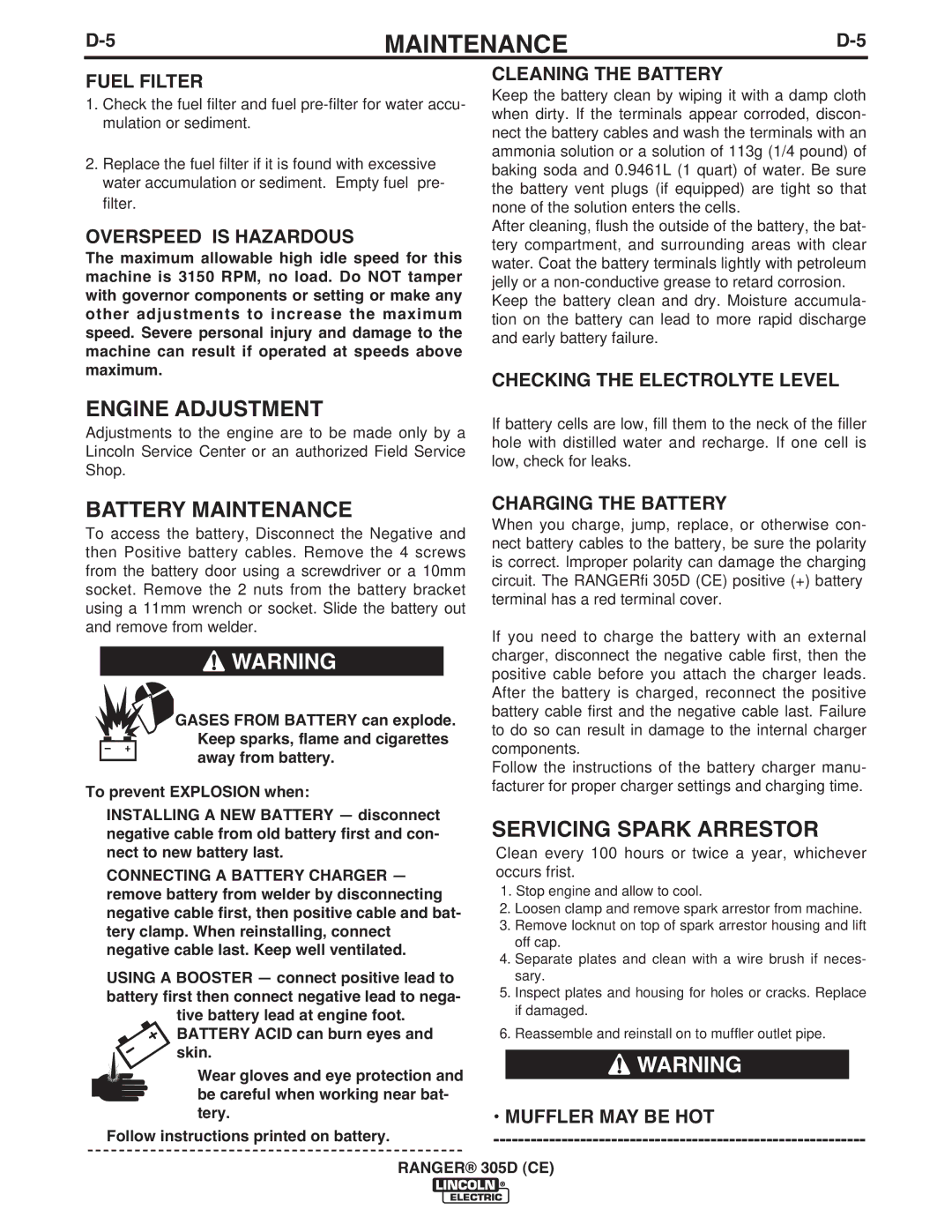11587, 11459, 11458 specifications
Lincoln Electric has established itself as a leader in welding and cutting technologies, and its products such as the Lincoln Electric 11458, 11459, and 11587 exemplify the innovation and quality the brand is known for. These models are widely utilized in various welding applications, delivering outstanding performance and reliability.The Lincoln Electric 11458 is notable for its robust design, catering primarily to the needs of professional welders who require precision and control. This model features advanced arc technology that allows for smooth and stable arc performance, reducing spatter and enhancing overall weld quality. Its user-friendly interface makes it a favorite among both novice and experienced welders, providing easy adjustments for various welding applications.
Next is the Lincoln Electric 11459, which takes welding performance further with additional features geared toward versatility. This model is designed to tackle a variety of materials, including aluminum, steel, and stainless steel. One of its key characteristics is the incorporation of inverter technology, which enables lightweight, portable operation without sacrificing power. The machine's compact size makes it ideal for fieldwork and small workshops, ensuring that professional welders can maintain high productivity levels regardless of their job site conditions.
Finally, the Lincoln Electric 11587 offers an impressive range of capabilities, perfect for heavy industrial applications. This model is engineered with an emphasis on durability and performance under extreme conditions. It is equipped with advanced control systems that provide real-time feedback, ensuring operators can maintain optimal performance. The robust cooling system prevents overheating, allowing for prolonged usage without compromising efficiency. Additionally, its compatibility with a wide range of welding processes, including MIG and TIG welding, makes it an invaluable tool for any welding operation.
In summary, the Lincoln Electric models 11458, 11459, and 11587 showcase the brand's commitment to innovation and quality in welding technology. Their features, including advanced arc performance, inverter technology, and robust durability, cater to both hobbyists and professionals alike. These products continue to set the standard in the welding industry, demonstrating Lincoln Electric's expertise and commitment to meeting the evolving demands of welders around the world.

